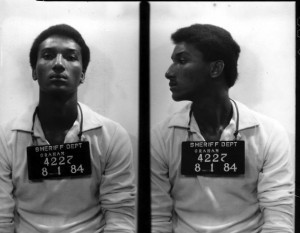Convicting the innocent: How Eyewitnesses Can Send Innocents to Jail

Ronald Cotton, falsely convicted of rape in 1984
She examined those two pictures for "four or five minutes." She then said:"Yeah. This is the one," and added, "I think this is the guy."
A detective asked her, "You 'think' that's the guy?" and she answered, "It's him."
…
Cotton was sentenced to life in prison plus 54 years. At a post-conviction hearing, Cotton's lawyer presented Thompson-Cannino with a man Cotton had met in prison and believed might be the real culprit. His name was Bobby Poole. She said: "I have never seen him in my life. I have no idea who he is."
Cotton served 10 and a half years before DNA tests exonerated him. The tests matched Bobby Poole, who then pleaded guilty. Ronald and Jennifer wrote a book together, Picking Cotton, about what went wrong. They now travel the country together to lobby for improved identification practices.
Brandon L. Garrett, writing in Slate, discusses just how many ways an eyewitness identification can go wrong. Police can steer a witness towards an id, ask questions in a way that nudges a witness towards more certainty than they have, all unconsciously.
I remember Conan Doyle talking about how unreliable eyewitness identifications were in Julian Barnes' Arthur & George, and that was at a time when fingerprints were still struggling to gain acceptance in policework. One of the reasons that shows like CSI and Waking the Dead are so popular is that they provide the illusion of absolute scientific proof. Rather than a trial being several different accounts of an event judged by twelve fallible human beings, a case becomes a scientific theorem that can be solved as completely as a math problem. The reality is not always so glamorous.



